Gregory A. Fournier's Blog, page 18
November 1, 2018
The Richard Streicher Jr. Murder--Literary Classics Book Award Finalist

I'm pleased to announce that The Richard Streicher Jr. Murder-- Wheatmark Inc . was chosen a finalist in Literary Classics 2018 Book Awards. Among other finalists is Arlo Guthrie for his book Monsters-- Rising Son International, Ltd.
Gold, Silver, and Top Honor awards will be awarded from the field of finalists in a range of fiction and nonfiction categories on November 15th. Winners will be invited to a reception held in Rapid City, South Dakota in May. I look forward to attending the writers conference, awards ceremony, formal gala, and book signing.
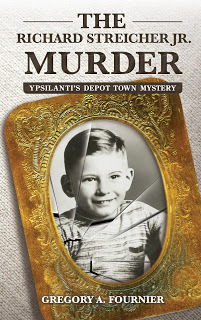 The Richard Streicher Jr. Murder
was intended to be a legacy project for the Ypsilanti Historical Society. I'm very surprised my true crime title has been singled out for this important international award.
The Richard Streicher Jr. Murder
was intended to be a legacy project for the Ypsilanti Historical Society. I'm very surprised my true crime title has been singled out for this important international award.NEWS RELEASE
Release Date: November 1, 2018
Literary Classics
pr@clcawards.org
Literary Classics Announces Youth Media Book Award Finalists
Rapid City, SD - The 2018 Literary Classics Book Award Finalists and Top Honors Book Awards Finalists have been announced. Selected from submissions by entrants around the globe, these distinguished honorees are recognized for their contributions to the craft of writing, illustrating, and publishing exceptional literature for a youth audience. In this highly competitive industry these books represent the foremost in literature in their respective categories.
The competition this year was tremendous, and we congratulate all of the finalists for their outstanding and inspiring work. Final award levels and categories will be announced November 15, 2018. All Silver, Gold and Top Honors award recipients will be invited to attend a writers’ conference, awards ceremony, formal gala, and authors’ book signing to be held in conjunction with the Great American Book Festival, May 10, 11 and 12, 2019 in downtown Rapid City, South Dakota.
The Literary Classics selection committee is proud to recognize this year’s titles in literature which exemplify the criteria set forth by the Literary Classics award selection committee. The Eighth Annual Literary Classics Book Awards will be presented in May, 2019 in conjunction with the Great American Book Festival in the City of Presidents.
Richard Streicher Jr. school friend remembers him: https://fornology.blogspot.com/2018/07/richard-streicher-jr-school-friend.html
Published on November 01, 2018 05:38
October 28, 2018
Detroit's Movie Maven--Bill Kennedy
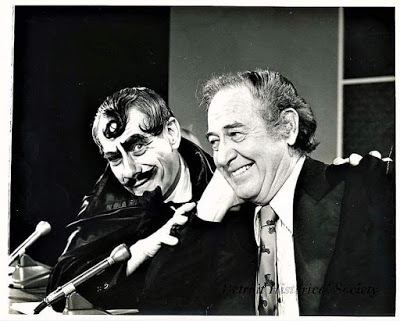 Bill Kennedy at the Movies with Sir Graves Ghastly. Sir Graves would riff on his monster movies and Bill would dish on Hollywood and the movie business.
Bill Kennedy at the Movies with Sir Graves Ghastly. Sir Graves would riff on his monster movies and Bill would dish on Hollywood and the movie business.Every Baby-Boomer from Detroit and Windsor remembers who gave us our extensive Hollywood movie education--Bill Kennedy. Bill started announcing on the radio professionally in the 1930s at WWJ - The Detroit News station. His deep voice resonated over the air waves.
In 1940, he embarked on a movie career and signed a contract with Warner Brothers Studios where he worked from 1941 until 1955. Bill had the voice but not the face. He didn't emote well on screen, so he was relegated to a series of flat supporting roles. He played mainly cops, bad guys, radio announcers (no stretch for Bill), newspaper men, and swindlers. In all, Bill Kennedy has 103 film credits.
In the post World War Two era, Kennedy appeared on numerous B-Western television shows including The Lone Ranger, The Cisco Kid, and The Gene Autry Show. Kennedy always spoke kindly of Gene Autry. Bill was over six feet tall and many of Hollywood's leading men were short and didn't like doing fight scenes with him. Gene Autry was short, but always had a job for Bill when he needed it. Autry told him once, "I like beating up bad guys on screen who are bigger than me."
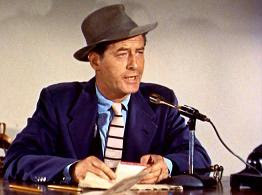 Bill Kennedy playing a newscaster in a Superman episode.
Bill Kennedy playing a newscaster in a Superman episode.What many of us in Detroit know that most people don't is Bill's was the voice behind the opening credits of The Adventures of Superman--one of the most iconic introductions in television history. Bill received a one-time check for $350. He regretted not asking for screen credit which might have benefited his career. The show has been continuously running in syndication since 1952. A link to the Superman program opening is below.
In 1956, Bill Kennedy returned to the Detroit area to host an afternoon movie program called Bill Kennedy's Showtime, for CKLW-TV across the Detroit River in Windsor, Ontario. The show became a big hit. Bill talked about his jaded experiences in Hollywood's heyday and how he worked with many of the top stars. His deadpan delivery and sarcastic wit won the loyalty of viewers. He had an avuncular, self-deprecating manner--especially if talking about a film he was in. If the movie was bad, he would tell his audience.
The show opened with a tight shot on a picture of a woman smoking a cigarette with Bill's theme song Just in Time playing in the background. The photograph was from a magazine. I can see the model in my mind's eye with her elbows on a table and a smoldering cigarette in her right hand. Bill chose Just In Time for his theme song because his professional life was at a low point when he got the job with CKLW.
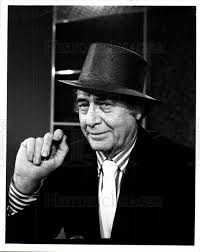 Bill wearing a hat to cover up his hair transplant surgery.In 1969, Bill took his show to WKBD which broadcast out of Southfield, Michigan. The show remained essentially the same with a title change to Bill Kennedy at the Movies. Bill would interview celebrities when they were in Detroit and he took on-air phone calls which were sometimes more interesting than the movies. I enjoyed the live TV commercial pitches of Abe Schroe for his furniture upholstery business.
Bill wearing a hat to cover up his hair transplant surgery.In 1969, Bill took his show to WKBD which broadcast out of Southfield, Michigan. The show remained essentially the same with a title change to Bill Kennedy at the Movies. Bill would interview celebrities when they were in Detroit and he took on-air phone calls which were sometimes more interesting than the movies. I enjoyed the live TV commercial pitches of Abe Schroe for his furniture upholstery business.Abe and Bill always had lively repartee like they knew each other well outside of work. These two got along so well on air that it strikes me Bill was probably part-owner or an investor in Artistic Upholstery. Bill would take a break and Abe would go into his pitch. Nobody else made live commercials on Bill's show--not Ollie Fretter--not even Mr. Belvedere (Detroit inside joke).
In 1983, Bill retired to Palm Beach, Florida. He died of emphysema on January 27, 1997, at the age of eighty-eight. Rest in peace "young, old-timer."
The Adventures of Superman introduction: https://www.youtube.com/watch?v=Q2l4bz1FT8U
Bill Kennedy's theme song Just In Time by Frank Sinatra. https://www.youtube.com/watch?v=RIcQ26arWAs
Published on October 28, 2018 06:48
October 16, 2018
Fornology.com Marching Toward a Million Hits
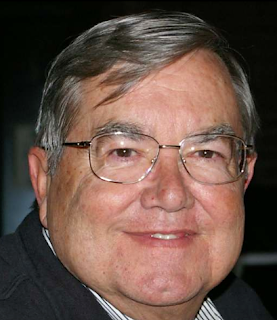 When I started my Fornology.com blog in May 2011, my goal was to promote and build readership for my debut book, Zug Island: A Detroit Riot Novel. After a year, if I got 100 hits a day or 1,000 hits for the month, I was pleased. Once I developed a core audience, I started experiencing the instant gratification of posting. In seven years, I've written over 400 blog posts and amassed over three-quarters of a million hits globally.
When I started my Fornology.com blog in May 2011, my goal was to promote and build readership for my debut book, Zug Island: A Detroit Riot Novel. After a year, if I got 100 hits a day or 1,000 hits for the month, I was pleased. Once I developed a core audience, I started experiencing the instant gratification of posting. In seven years, I've written over 400 blog posts and amassed over three-quarters of a million hits globally. I've blogged about topics related to my books Zug Island, Terror In Ypsilanti: John Norman Collins Unmasked and The Richard Streicher Jr. Murder: Ypsilanti's Depot Town Mystery. My current project is about the battle for the Detroit River during Prohibition. Not wanting to blog my book while writing it, I do blog about topics related to the general research I'm doing--for instance, my post on the Thompson Machine Gun. It plays a part in my treatment of the era but only as a tool for murder and mayhem.
My latest project is about the Purple Gang, the Mafia, and the federal government's attempts to control the flood of bootleg liquor crossing the Detroit River. The United States Treasury Department estimates that 75-80% of the booze smuggled into the country crossed the river between 1920 and 1933--the Prohibition years.
As an independent author starting late in the game at sixty-one-years old, my original goal was to write a memoir and see it through to publication. The positive response and initial success of Zug Island prompted me to write a second book, and then a third. Those books have won six writing awards and two of them are Amazon best-sellers.
My current goal is to finish my fourth book within the next two years. Once that book is published, I plan to promote it for a year and then wind down my writing career. When that happens, I hope to have reached over one-million Fornology.com hits--less than 240,000 to go.
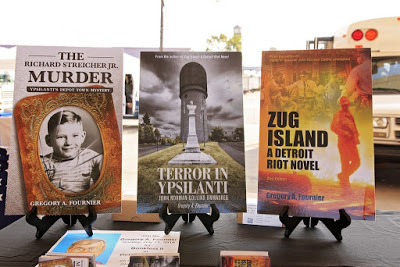
A special thank you to all of my readers, especially those who wrote reviews and posted them on Amazon. Reviews provide valuable word-of-mouth exposure and promote sales. If you like any of my books and have yet to write a review, it's not too late. That said, I'm pleased with the level of success I've achieved as an independent author and hope readers will embrace my next project.
To write a review, click on my Amazon author site, then click on the book icon, and scroll down: https://www.amazon.com/Gregory-A.-Fournier/e/B00BDNEG1C You can also click on the book icons in the right sidebar of this page.
Published on October 16, 2018 10:56
October 14, 2018
Motown Memories
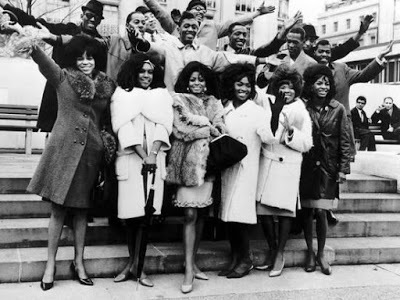 The Supremes, Martha and the Vandellas, The Temptations, and The Miracles in 1965 beginning their twenty-one city tour of the United Kingdom tuning the British ear to the Motown sound.
The Supremes, Martha and the Vandellas, The Temptations, and The Miracles in 1965 beginning their twenty-one city tour of the United Kingdom tuning the British ear to the Motown sound.One of the must-see attractions in Detroit is Hitsville USA--the Motown Museum on West Grand Boulevard--also named Berry Gordy, Jr. Boulevard. The museum was opened in 1985 by Berry's sister Esther Edwards and has been going strong ever since.
Everyone knows the Motown music and the legendary performers, but the thing that fascinated me most about the guided tour was Berry Gordy's story and his original business model.
When I went to Hitsville USA, I heard the story of how Berry got started in the music business. From a modest $800 Gordy family business loan and a two-story frame house, he built a music empire that shaped the history and direction of pop music and helped integrate American culture.
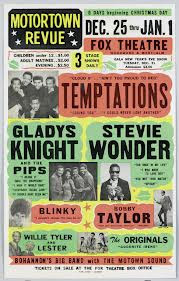 Musical magic was born in a converted garage called Studio A, while the Gordy family lived in the second floor flat. I went upstairs and saw the small apartment where Motown records was born. The kitchen table where the family ate, often found Berry Gordy with his friend Smokey Robinson stuffing newly pressed warm vinyl into record jackets and rushing them off to local Detroit DJs and record stores. Gordy's first big hit was "Money." Motown's business was literally built from the ground up. Not bad for what started as a
Musical magic was born in a converted garage called Studio A, while the Gordy family lived in the second floor flat. I went upstairs and saw the small apartment where Motown records was born. The kitchen table where the family ate, often found Berry Gordy with his friend Smokey Robinson stuffing newly pressed warm vinyl into record jackets and rushing them off to local Detroit DJs and record stores. Gordy's first big hit was "Money." Motown's business was literally built from the ground up. Not bad for what started as acottage industry that developed into a corporate colossus.
One of Gordy's early jobs was on the assembly-line at Ford's Lincoln-Mercury plant, wrestling with automobile upholstery. He would get ahead on his production quota to create small pockets of time to compose songs and develop melodies in his head. If Berry liked what popped into his mind, he wrote it down in a spiral notebook he kept in his back pocket. Once the mind-numbing repetition of the assembly-line became second-nature, his mind was free to create and dream about creating a music factory that brings in raw talent at one end and produces a seasoned performer at the other end. Motown was not so much an assembly-line as a hit factory of skilled craftsmen and women turning out a consistently high-quality product known the world over as the Motown Sound.
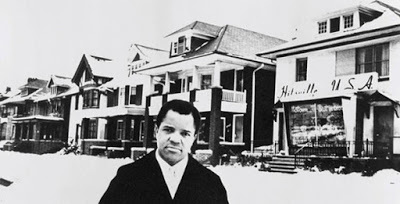 Berry Gordy outside Hitsville USA--2648 W. Grand Boulevard.
Berry Gordy outside Hitsville USA--2648 W. Grand Boulevard.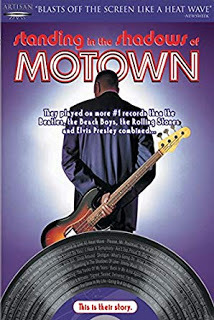 For anyone who is a Motown fan, the documentary "Standing in the Shadows of Motown" tells the behind the scenes story of the Funk Brothers from their first-hand accounts like nothing else can. This small band of studio musicians played on all of the Motown hits. The documentary won four film awards and two Emmys in 2002.
For anyone who is a Motown fan, the documentary "Standing in the Shadows of Motown" tells the behind the scenes story of the Funk Brothers from their first-hand accounts like nothing else can. This small band of studio musicians played on all of the Motown hits. The documentary won four film awards and two Emmys in 2002. Here is a recent link to Motown song writer Lamont Dozier reminiscing about writing some of the greatest Motown hits ever recorded: https://youtu.be/AUx86C-xOuI
Published on October 14, 2018 09:00
October 11, 2018
The Thompson Submachine Gun--World War I era "Trench Broom" Becomes Prohibition-era "Street Sweeper"
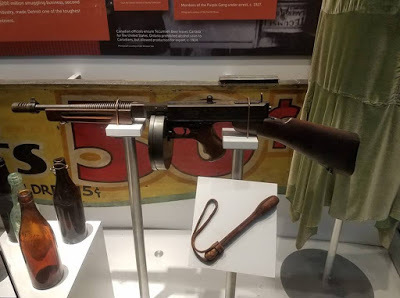 Thompson Submachine Gun and black jack on display at Detroit Historical Museum.
Thompson Submachine Gun and black jack on display at Detroit Historical Museum.In the early years of Prohibition in America, the weapons of choice for the underworld were fists, black jacks, brass knuckles, tire thumpers, stilettos, hand guns, sawed-off shotguns, and rifles. With the first attempt on Al Capone's life on January 12, 1925, members of the late Dion O'Banion's North Side Gang--Bugs Moran, "Schemer" Drucci, and Hymie Weiss--had sworn a blood vendetta against Capone and his organization for assassinating their boss.
The trio raked .45-caliber bullets along the side of Capone's car with a weapon new to the streets--the Thompson submachine gun. Capone survived the attack. When he looked at the perforated driver's side of his Cadillac touring car and the damage done to the buildings in the line of fire, Capone remarked, "I need to get some of those." Big Al hastened to equip his arsenal with machine guns.
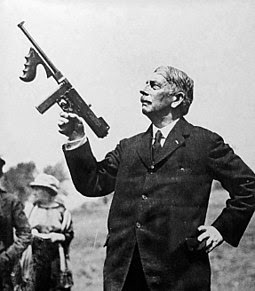 The press dubbed the weapon the "tommy gun," and it changed the rules of gangster warfare. The automatic weapon was co-invented by Brigadier General John T. Thompson in 1918. The first commercial models were made by the Colt Manufacturing Company in 1921, too late for World War I. The United States Army declined to adopt the weapon and law enforcement showed little interest in the weapon because the police were afraid of innocent civilian casualties.
The press dubbed the weapon the "tommy gun," and it changed the rules of gangster warfare. The automatic weapon was co-invented by Brigadier General John T. Thompson in 1918. The first commercial models were made by the Colt Manufacturing Company in 1921, too late for World War I. The United States Army declined to adopt the weapon and law enforcement showed little interest in the weapon because the police were afraid of innocent civilian casualties.  Police were slow to recognize the impact these guns would make on their streets.
Police were slow to recognize the impact these guns would make on their streets.With the military and law enforcement markets closed to Thompson, he and several investors started the Auto-Ordinance Corporation in New York. They manufactured 15,000 of the guns in 1923 selling each for $175 with a 20-round clip or a canister drum that could hold up to 50 .45 cal rounds for an extra $50. Later on, 100-round drums became available.
Auto-Ordinance wholesaled the submachine guns to firearm retailers across the country and directly to the public through mail order. All the seller required was a purchaser's name and address. Because this hybrid weapon was entirely new and in a class of its own, it didn't fall under existing gun laws. Anyone could legally purchase as many submachine guns as he could afford.
Nobody planned for this military weapon to be available to civilians--much less fall into the hands of outlaws--but business is business and a sale is a sale. The weapon soon became a status symbol for gangsters. Once the government instituted strict controls in the late 1920s, black market guns sold for as much as $2,000 each. The only people who could afford them were gangsters. Attempts were made to etch out serial numbers or stamp small Xs over the serial numbers, but crime science developed an acid wash that could bring out the obscured numbers.
The Thompson machine gun--also known as the chopper, the Chicago Typewriter, the Trench Broom, and the Street Sweeper--changed the rules of gang warfare. The original assault weapon was light weight (under ten pounds) and portable; it came with a 20-round stock box clip or with an available canister drum holding 50 .45-cal cartridges; the gun had a 500 yard range with a rate of fire between 600 to 750 rounds per minute; and the muzzle velocity was 935 feet per second.
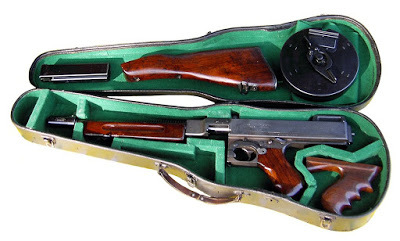 The original models were hard to control and next to impossible to aim accurately, but as weapons of mass murder and mayhem, the tommy gun had no rivals. The underworld was fascinated with its new plaything. The weapon's compact size allowed it to break down small enough to be carried in a violin case. The chopper became the signature weapon of several major crime syndicates and was involved in some of the most infamous murders of the Prohibition era.
The original models were hard to control and next to impossible to aim accurately, but as weapons of mass murder and mayhem, the tommy gun had no rivals. The underworld was fascinated with its new plaything. The weapon's compact size allowed it to break down small enough to be carried in a violin case. The chopper became the signature weapon of several major crime syndicates and was involved in some of the most infamous murders of the Prohibition era.Link to Detroit's Purple Gang post: https://fornology.blogspot.com/2018/02/kosher-nostra-detroits-purple-gang.html
Published on October 11, 2018 08:08
September 21, 2018
Ypsilanti District Library Hosts Booktalk on Richard Streicher Jr. Murder
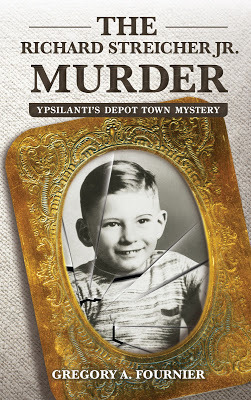 On Tuesday October 2, 2018, I will be giving a book talk on The Richard Streicher Jr. Murder at the Ypsilanti District Library on Whittaker Road at 6:30 pm. This event is sponsored by the Ypsilanti Historical Society which will provide free donuts and apple cider. Please join us if you are in the area and bring a friend.
On Tuesday October 2, 2018, I will be giving a book talk on The Richard Streicher Jr. Murder at the Ypsilanti District Library on Whittaker Road at 6:30 pm. This event is sponsored by the Ypsilanti Historical Society which will provide free donuts and apple cider. Please join us if you are in the area and bring a friend.This Depot Town cold case project was the brainchild of Ypsilanti Historical Society docents George Ridenour and Lyle McDermott. From 2001 to 2007, they collected two boxes of documentation for this case from government agencies and interviews with several people who went to school with Richard Streicher Jr.
After an extended illness, George passed away. Lyle asked if I would complete the project. This crime was big news in Ypsilanti during the Depression but mostly forgotten about for eighty years. Now for the first time in print, the story is told from the point-of-view of the people who lived it. This missing part of Ypsilanti's lost history has been found. My only hope is that George would be pleased with the final result.
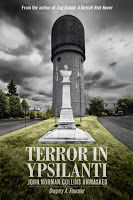
I plan to speak for about twenty minutes and then answer questions about either the Streicher book or my John Norman Collins book. Copies of my books will be available at clearance prices. They make great holiday gifts for the true crime or history lover in your life.
Streicher school friend makes an appearance in July: https://fornology.blogspot.com/2018/07/richard-streicher-jr-school-friend.html
Published on September 21, 2018 11:49
September 14, 2018
The EDSEL--Car of the Future--Really?
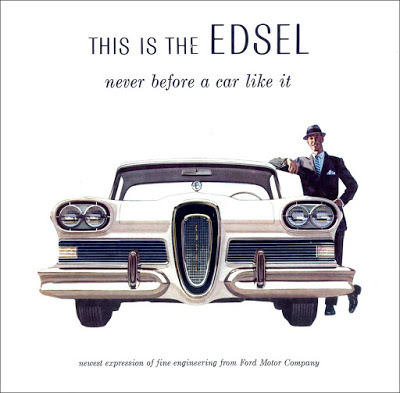
I grew up in the Dearborn, Michigan--the center of what is commonly known as Ford Country. Most people in the area buy Ford products--unless of course they work for Chrysler or General Motors. Brand loyalty is encouraged by the automotive companies and most workers comply--especially when the company offers employee discounts.
When Ford Motor Company came out with the Edsel in 1958, the company upgraded its Lincoln Division to compete with General Motor's luxury Cadillac. Ford needed a premium vehicle to fill the intermediate slot vacated by Lincoln to compete with Oldsmobile, Buick, and DeSoto. Ford promoted the Edsel as the product of extensive research and development. Their sophisticated market analysis indicated to the suits at Ford's that they had a winner.
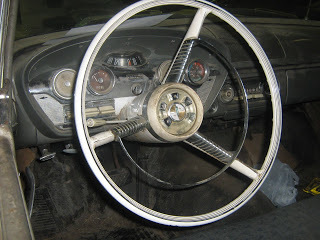 The Edsel was touted as the car of the future. Ford executives were confident of brand acceptance by the car buying public. Innovative features like a rolling-dome speedometer, engine warning lights, an available Teletouch pushbutton shifting system, self-adjusting brakes, optional seat belts, and child-proof rear door locks would surely capture the imagination of modern-thinking consumers.
The Edsel was touted as the car of the future. Ford executives were confident of brand acceptance by the car buying public. Innovative features like a rolling-dome speedometer, engine warning lights, an available Teletouch pushbutton shifting system, self-adjusting brakes, optional seat belts, and child-proof rear door locks would surely capture the imagination of modern-thinking consumers.The day after the Edsel was introduced, The New York Times dubbed it the "reborn LaSalle"--a nameplate that disappeared in the early 1940s. So much for the car of the future concept. Once the Edsel hit the streets, the public thought it was unattractive, overpriced, and overhyped. The car's production was stopped after three years of under performing in Ford and Mercury showrooms.
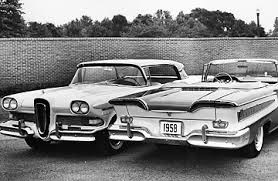
Ford Motor Company lost $250 million on the project. Edsel's failure was across the board. Popular culture thought the car's styling was odd. The nameplate's trademark horsecollar grille was said to resemble "an Oldsmobile sucking a lemon." The Teletouch pushbutton transmission was problematic being centered on the steering wheel hub where most cars had their warning horn. Some drivers accidently shifted when they meant to sound their horn. Another unforeseen problem was that the pushbutton transmission was not suited for street racing, so the Edsel became known as an old man's car.
What turned off other consumers was the car's sticker price which placed it in direct competition with Mercury--Ford's sister division. Further complicating matters, the low priced Volkswagen Beetle hit the American car market in 1957. Many younger buyers were fascinated by the odd-looking vehicle with the incredible gas mileage. The Edsel was a gas guzzler.
Consumer Reports blamed the car's poor workmanship. For instance, the trunk leaked in heavy rain, and the pushbutton transmission was fraught with technical problems. Marketing experts insisted the Edsel was doomed from the start because of Ford's inability to understand the American consumer and market trends. Automotive historians believe the Edsel was the wrong car at the wrong time.
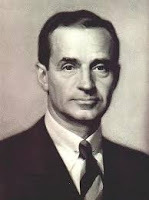 Edsel FordUnfairly, the name Edsel became synonymous with epic failure. Named after Henry Ford's only son, this car became a posthumous slap in the face to the man who mobilized his family's vast industrial resources to produce B-24 Liberator bombers, instrumental in helping win World War II. Edsel Ford's legacy deserved better.
Edsel FordUnfairly, the name Edsel became synonymous with epic failure. Named after Henry Ford's only son, this car became a posthumous slap in the face to the man who mobilized his family's vast industrial resources to produce B-24 Liberator bombers, instrumental in helping win World War II. Edsel Ford's legacy deserved better.As luck would have it, my father bought a brand-new Edsel in 1959. It was Christmas time and I was eleven years old. After my brothers and I had our photograph taken with Santa at Muirhead's Department Store, my dad brought us to the Ford Dealership across the street for our family Christmas present.
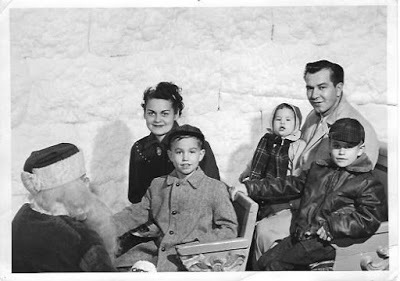 He went into an office and signed a few papers, then the salesman handed over the keys. As we were driving away from the dealership, I remember snowflake clusters illuminated by the car's headlights. It was magical. By the time my family got home, we were intoxicated with the new-car smell of fresh upholstery and uncured lacquer.
He went into an office and signed a few papers, then the salesman handed over the keys. As we were driving away from the dealership, I remember snowflake clusters illuminated by the car's headlights. It was magical. By the time my family got home, we were intoxicated with the new-car smell of fresh upholstery and uncured lacquer.Later that week, my dad was celebrating with his friends on Friday and had a few too many before coming home from work. On the way, he hit an ice patch and lost control of the car, wrapping it around a telephone pole. He was relatively uninjured, but the Edsel was totaled. We had that Edsel for such a short time I can't remember what color it was.
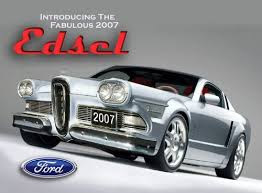 Edsel concept car.Misfortune aside, I've always had a love for the Edsel and often wished Ford would find a market for the nameplate and start production again. That may never happen, but a boy can dream.
Edsel concept car.Misfortune aside, I've always had a love for the Edsel and often wished Ford would find a market for the nameplate and start production again. That may never happen, but a boy can dream.Here is a Psychology Today article on how the Edsel got its name:
Published on September 14, 2018 08:00
September 13, 2018
Bald Barbie Doll

My wife Susan wrote Mattel Consumer Services suggesting that their company produce a bald Barbie doll for young cancer patients. We were quite moved by Mattel's response and want to share this rare look into Mattel's corporate heart.
From: Mattel Consumer Services [mailto:MattelConsumerService@Mattel.com] Sent: Thursday, January 15, 2015 12:08 PM To: [address omitted] Subject: In Reference to Case Number: 23107550
Hi Susan,
We are honored that you believe that Barbie could be the face of such an important cause. Mattel appreciates and respects the passion that has been
built up for the request for a bald Barbie doll.
Play is vital for children, especially during difficult times.We are pleased to say that in 2013 we produced a fashion doll, Ella friend of Barbie,and she included wigs, hats, scarves and other fashion accessories to provide girls with a traditional fashion play experience.For those girls
who choose, the wigs and head coverings can be interchanged or completely removed.We will work with our longstanding partner, the Children's Hospital Association,to donate and distribute the dolls exclusively to children's
hospitals directly reaching girls who are most affected by hair loss. A limited number of dolls and monetary donations will also be made to CureSearch for Children's Cancer and the National Alopecia Areata Foundation.
Through a thoughtful approach, we made the decision not to sell these dolls at retail stores, but rather get the dolls directly into the hands of children who can most benefit from the unique play experience, demonstrating Mattel's ongoing commitment to encourage play as respite for children in the hospital and to bring joy to children who need it most.We appreciate the conversation around this issue, and thank you for contacting us to provide
your feedback!
Thanks,
Sally
Consumer Services Associate
Ella, Friend of Barbie (Request for doll)https://curesearch.org/Ella-Barbie
Published on September 13, 2018 12:47
August 25, 2018
Prohibition History Crash Course
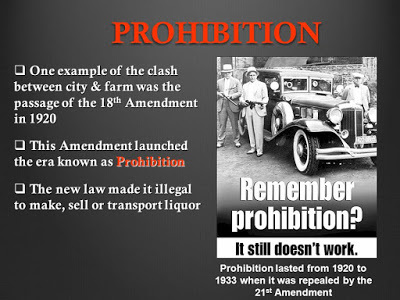
With the passage of the Eighteenth Amendment to our United States Constitution and the Volstead Act on October 28, 1919, the manufacture, sale, and distribution of intoxicating spirits was made illegal in the United States. The Prohibition Act went into effect in 1920 and pushed the consumption of booze underground, creating the Roaring Twenties and the age of the big city gangster.
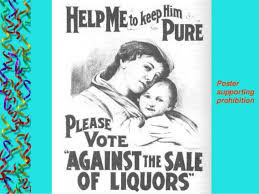 Seen as a "Noble Experiment," Protestant, Baptist, and women's Temperance groups believed that Prohibition would improve American life and guide our nation towards prosperity and morality. The evils of alcohol were readily visible with scenes of public drunkenness, violence, and domestic abuse of women and children commonplace events.
Seen as a "Noble Experiment," Protestant, Baptist, and women's Temperance groups believed that Prohibition would improve American life and guide our nation towards prosperity and morality. The evils of alcohol were readily visible with scenes of public drunkenness, violence, and domestic abuse of women and children commonplace events.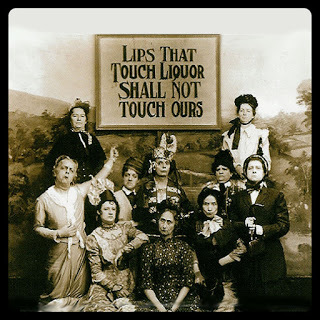 Henry Ford was a strong advocate of the Temperance movement hoping to improve the attendance of his workforce--many of whom were drinkers of alcoholic beverages. The Klu Klux Klan was also a supporter of the movement for anti-immigrant reasons. Anti-German sentiment after World War I was unsympathetic with the German tradition of beer drinking. The Irish Catholics had a taste for hard liquor while Italian and French Catholics enjoyed their wine. All were opposed to the alcohol ban on cultural grounds.
Henry Ford was a strong advocate of the Temperance movement hoping to improve the attendance of his workforce--many of whom were drinkers of alcoholic beverages. The Klu Klux Klan was also a supporter of the movement for anti-immigrant reasons. Anti-German sentiment after World War I was unsympathetic with the German tradition of beer drinking. The Irish Catholics had a taste for hard liquor while Italian and French Catholics enjoyed their wine. All were opposed to the alcohol ban on cultural grounds. 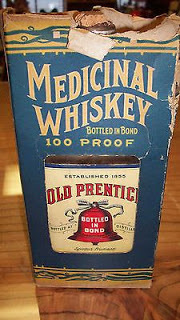 A loophole in the Volstead Act did not specifically prohibit the use of intoxicating beverages. Physicians were allowed to prescribe whiskey for medicinal purposes. Patients could buy a prescription from a doctor for $4.00 and then take it to a pharmacy to be filled. Doctors were doing a box-office business. Because of rampant abuses in the first years of Prohibition, a law was passed to allow physicians to write no more than fifty prescriptions per year and patients could obtain no more than one gallon of whiskey per month.
A loophole in the Volstead Act did not specifically prohibit the use of intoxicating beverages. Physicians were allowed to prescribe whiskey for medicinal purposes. Patients could buy a prescription from a doctor for $4.00 and then take it to a pharmacy to be filled. Doctors were doing a box-office business. Because of rampant abuses in the first years of Prohibition, a law was passed to allow physicians to write no more than fifty prescriptions per year and patients could obtain no more than one gallon of whiskey per month. Homemade wine and apple jack could be produced for personal consumption so farmers and home vintners could preserve their grape and apple crops over the winter months. Sacramental wine for religious purposes was also allowed to placate Catholic and Jewish voters.
Prohibition began the era of smuggling distilled liquor from Canada, Cuba, and the Bahamas. There was also wildcat liquor production in the form of moonshine and bathtub gin. Moonshine production increased in Appalachia in the backwoods and hollows of the Smokey Mountains. Farmers realized that converting their corn crops to alcohol was ten times more profitable than transporting sacks of grain for human or animal consumption.
 Typical still setupTo increase production and profits, some moonshiners used old automobile radiators for condensation units and switched from corn mash to pure sugar. Because of unsanitary conditions and contaminated backwoods stills, many drinkers of moonshine went blind from glycol and lead poisoning, prompting the expression "blind drunk." The stronger the "shine," the higher the proof--180 proof meant that the liquor was 90% alcohol and 10% water. Commercial liquor is typically 80 proof with 40% alcohol and 60% water. The strength of moonshine earned it the name White Lightening.
Typical still setupTo increase production and profits, some moonshiners used old automobile radiators for condensation units and switched from corn mash to pure sugar. Because of unsanitary conditions and contaminated backwoods stills, many drinkers of moonshine went blind from glycol and lead poisoning, prompting the expression "blind drunk." The stronger the "shine," the higher the proof--180 proof meant that the liquor was 90% alcohol and 10% water. Commercial liquor is typically 80 proof with 40% alcohol and 60% water. The strength of moonshine earned it the name White Lightening.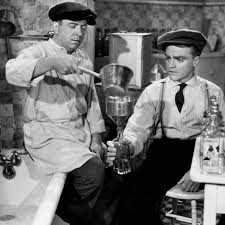 Scene from "The Roaring Twenties" with James Cagney and Frank McHugh.Enterprising city dwellers also began making a concoction called bathtub gin. Five gallon steel containers of cheap grain alcohol were poured into a tub. Tap water was used as a cutting agent at a ratio of one part alcohol to three parts water to stretch the supply. Then, flavoring agents such as juniper berry juice or fruit juice was added. For color and aging, a few drops of coal tar extract would do nicely as would burnt sugar. Then, the mixture was hand-bottled in used liquor bottles or relabeled with counterfit brand names and sealed with phony Federal liquor commission stamps.
Scene from "The Roaring Twenties" with James Cagney and Frank McHugh.Enterprising city dwellers also began making a concoction called bathtub gin. Five gallon steel containers of cheap grain alcohol were poured into a tub. Tap water was used as a cutting agent at a ratio of one part alcohol to three parts water to stretch the supply. Then, flavoring agents such as juniper berry juice or fruit juice was added. For color and aging, a few drops of coal tar extract would do nicely as would burnt sugar. Then, the mixture was hand-bottled in used liquor bottles or relabeled with counterfit brand names and sealed with phony Federal liquor commission stamps. The general quality of homemade liquor declined during Prohibition and was harsh to the taste. This created the popularity of the cocktail and the highball to cut the bitterness of the hooch. In those days, cocktails contained three or more ingredients--alcohol, a source of sweetness (honey, sugar, or molasses), and a bitter/citrus flavor to mask the harshness. Highballs were simply liquor and a mixer like 7-Up to flavor and dilute the alcohol.
The following link from the History Channel gives a three minute, animated survey of Prohibition in America. Wait for the ad to run: https://www.history.com/topics/roaring-twenties/prohibition/videos
Published on August 25, 2018 09:04
August 14, 2018
Gaslighting--A Sociopath's Favorite Tool
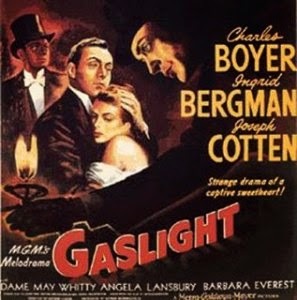 The psychological phenomenon known as gaslighting has become a colloquial term to describe a form of mental abuse where a dominant individual manipulates a weaker person's sense of psychological well-being to undermine the victim's mental stability. It is the manipulation of external reality to make someone doubt their sanity.
The psychological phenomenon known as gaslighting has become a colloquial term to describe a form of mental abuse where a dominant individual manipulates a weaker person's sense of psychological well-being to undermine the victim's mental stability. It is the manipulation of external reality to make someone doubt their sanity.The term derives from the popular 1944 American film entitled Gaslight--based on a 1938 British stage play. Frenchman Charles Boyer plays the sociopathic husband of the psychologically frail Ingrid Bergman. This memorable film portrays a husband's attempt to destroy his wife's sanity by manipulating her perception of reality, so he can steal her jewels.
 Charles Boyer and Ingrid BergmanSociopaths instill a high level of anxiety and confusion to disorient their victims. Information is twisted and spun by them so victims begin to doubt themselves. Targets lose faith in their ability to make judgments and become insecure about their decision-making abilities.
Charles Boyer and Ingrid BergmanSociopaths instill a high level of anxiety and confusion to disorient their victims. Information is twisted and spun by them so victims begin to doubt themselves. Targets lose faith in their ability to make judgments and become insecure about their decision-making abilities. Gaslighting describes an antisocial personality disorder that relies on deception, denial, mind games, sabotage, isolation, and destabilization. It is a form of narcissistic abuse that occurs in all types of relationships and every walk of life. This syndrome is often associated with marital relationships, but anyone can be a victim. Gaslighting can be seen in abusive parent-child relationships and in the workplace with an aggressive boss brow-beating his employees. It is mental bullying that can escalate into physical violence. These narcissists are puppet masters who often manipulate people for their own personal gain or to play twisted power and control games.
Gaslighting is a deliberate and progressive method of covert control that imposes a form of psychosis on its victims. Brainwashing, interrogation, isolation, and torture are all forms of psychological warfare used by the military, intelligence agencies, law enforcement, and terrorist organizations. On any level, it is a human and civil rights violation.

***
For more detailed information on gaslighting and a link to The National Domestic Violence Hotline, view the following link: http://www.thehotline.org/2014/05/what-is-gaslighting/
Published on August 14, 2018 12:30



